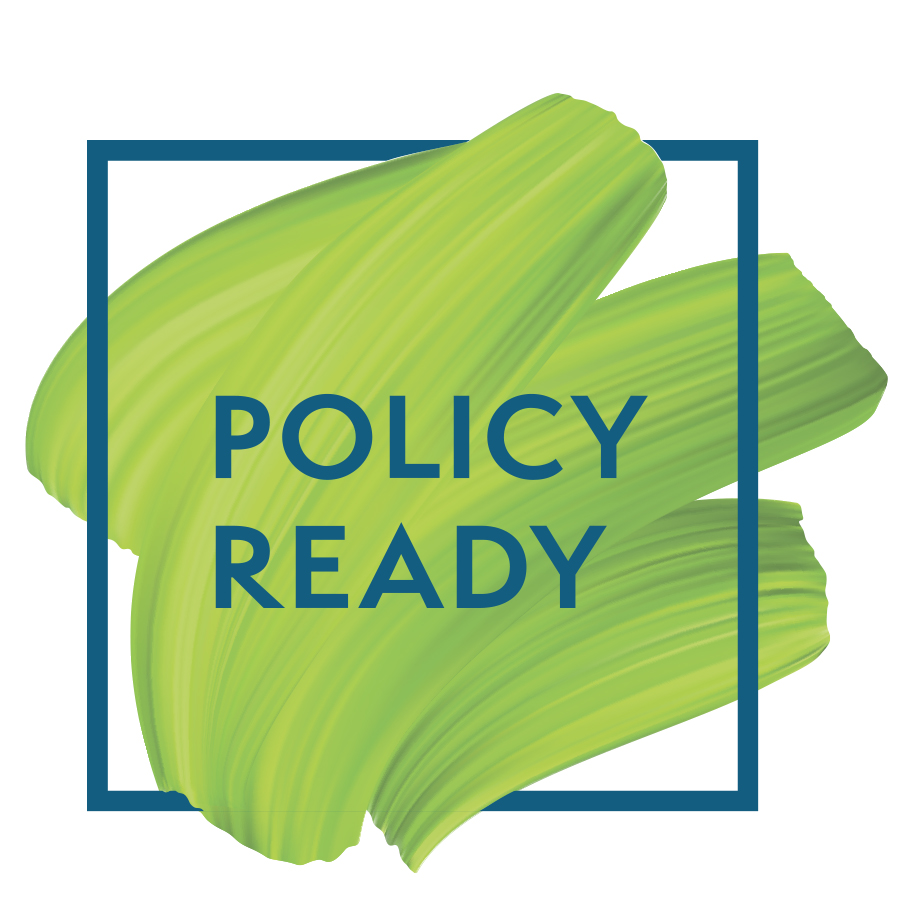Addressing Dis-Connected Policy in the Age of Incoherence
By: S. Ashleigh Weeden, Wayne Kelly, Joel Templeman
It might seem self-evident, but it is essential to start any discussion about contemporary policy making with the reminder that digital technologies now impact every facet of how we live, work, and play. Digital technologies are no longer - and, arguably, never were - separate from or layered on top of the policy process, but both theoretical and pragmatic discussions of policy still often treat them as add-ons, at best. This has produced a tangled web of issue-specific interventions, politically motivated investment decisions, and challenging tensions between different policy objectives, resulting in interventions that might make sense in isolation but which ultimately frustrate or impede interventions in other areas. This is known as policy incoherence.
Policy Incoherence
Policy incoherence is what happens when interactions between sectors or portfolios are not accurately accounted for or addressed - whether through ignorance, underestimation, or intentional dismissal. Policy incoherence happens most frequently when incongruent goals, values, or power-dynamics collide and is often typified by clashes between economic policy with broader policy agendas, but it can also result from competing agendas among different orders of government. Climate policy agendas versus energy or industrial policy agendas are often used as examples of the former, while municipalities striking direct policy agreements with the federal government in order to by-pass provincial policy agendas might be seen as an example of the latter. It is worth noting, however, that policy incoherence/coherence is not a binary between ‘good’ coherence and ‘bad’ incoherence. Actors, both inside and outside government institutions, can and have used policy incoherence to their advantage by operating in the gap created by the combination of policy incoherence and a lack of attention from those most responsible for it. For example, in Ontario, there are more than a dozen definitions of ‘rural’ used in various policies and programs - and savvy strategists in some local governments have sometimes used these competing definitions to argue for eligibility in programs that may not have initially supported them. Others have found ways to operate in the murky waters of interjurisdictional infighting by striking agreements with the federal government directly if provincial policies work against local goals and plans.
While one might argue that strategically exploiting policy incoherence is a maladaptive coping mechanism, it is often the only pragmatic way of navigating a policy landscape that has become so complex and poorly organized that it resists structural and practical reform. This will remain the case unless or until policymaking institutions are able to configure a system where each actor and relationship in the policy process has clear lines of responsibility, authority, accountability, capacity, and resourcing that are easily understood by those outside the system itself.
The federal and provincial governments across Canada have continued to struggle to create effective policy coherence between digitally oriented interventions and policy work. Despite nearly fifty years of policy statements on digital technologies, from infrastructure to applications, it remains unclear whether digital policy investments have meaningfully supported social policy goals. Often, digital policy portfolios have been largely captured by either internal facing ‘digital government’ concerns or by an obsessive orientation towards private capital and economic development. Canada’s failure to meaningfully move the needle in the telecommunications field, particularly in rural broadband access and uptake, is perhaps the strongest example of this dynamic, as the majority of investments in this file have never actually been evaluated for their effectiveness and still remain focused on transferring public money to private capital to build critical infrastructure (that largely remains unbuilt).
Digital policy has, unfortunately, come to represent policy-based evidence making in many cases, where a digital solution is offered before a problem is ever fully analyzed or where concerns about digital technology are siloed away from broader policy agendas. For example, why is separate legislation targeting fraud or harassment depending on whether it happens ‘online’ or ‘offline’? Digital interventions, investments, policies, or programs are often found scattered throughout government in various portfolios, but rarely aggregated and viewed as a whole, resulting in inefficiencies. Disconnected policies result in disjointed outcomes.While governments are rightly concerned with the way digital considerations influence and impact service design and delivery, they often fail to account for the ways in which digital interventions, policies, and programs could support other policy portfolios – or, alternatively, how ineffective application or incorrect assumptions about digital technologies and programs could prevent the achievement of those goals.
Digital Equity and Today’s Complex Policy Making Realities
Current considerations of ’digital equity’ tend to focus on access or adoption of technology but rarely consider or directly evaluate the multi-directional implications and impacts of social policy on digital policy, and vice versa, as a matter of equity. Sometimes, the focus on physical infrastructure or connectivity can prevent critical assessment and management of other crucial aspects of digital policy, such as why and how it is used to support service delivery, workforce and skill development, social inclusion priorities, or integration with every other portfolio. For example, in the current housing crisis, there have been many initiatives announced to support affordable housing; however, those policy interventions may have been strengthened by integrating or supporting parallel programming/investments that ensure new housing developments are built with fibre-to-the-premise (FTTP) (meaning fibre-optic infrastructure is connected directly to an individual premise, rather than to a shared hub or other mechanism that dilutes its efficiency). Taken even further, that FTTP could be a publicly run network or managed through wholesale access, or any number of other strategies that would help address faults in the Canadian telecommunications market.
Assumptions about the appropriateness of digital service delivery as equivalent to other service delivery mechanisms and/or failure to consider the implications of digital-delivery-by-default on in-situ service delivery can produce equity concerns (for example, if all services are assumed delivered via digital mechanisms, what happens when some services require ’in situ’ infrastructure or when direct contact between front-line government services and communities are lost/altered).
Many governments have adopted a practice of presumed inevitability about digital technologies that has precluded the interrogation of important questions throughout the policymaking process, such as: is a digital approach the right approach or have we considered non-digital or non-technological approaches? The result is that public policy can become a coercive tool that insists on participation in a digital process that people and communities may not need or want, or which materially affects their ability to achieve their actual goals.
Finally, incoherence across the broader policy ecosystem makes it difficult, if not impossible, to meaningfully analyze and evaluate the impact of digital policy interventions on broader public policy goals, and vice versa, sometimes simply because no one actually knows how the various points in the system interact.
At the time of writing, there appears to be limited exploration of these dynamics in Canada at senior policy making tables or in public administration research. The resulting tangled web of well-intentioned policies and missing evaluating literature invites Thomas Dye’s foundational question for guiding public policy analysis: does the government actually know what it is doing?
Unfortunately, it would seem, the answer is no.
Developing improved coherence requires focused evaluation to address disconnected digital policies across all orders of government through whole-of-government considerations of what, exactly, policymakers are trying to achieve and questioning why, whether, when, and how digital technologies should or could be used to achieve those goals.
S. Ashleigh Weeden, MPA, PhD is a Post-Doctoral Researcher with Brandon University and a Research Associate with the Canadian Centre for Policy Alternatives (Ontario).
Wayne Kelly, PhD is the Director of the Rural Development Institute at Brandon University, Brandon, Canada, kellyw@brandonu.ca
Joel Templeman, CD, MPA, MEd is the Executive Director of the Internet Society Manitoba Chapter Inc. and a doctoral student at the University of Calgary.
Together, they are examining issues in this blog post through a Mitacs-funded research initiative - ‘Digital Horizons: Shaping Manitoba’s Integrated Policy Future’ - to explore to find and highlight the often underemphasized intersections between broader/whole-of-government socio-economic policy agendas and digital policy.


